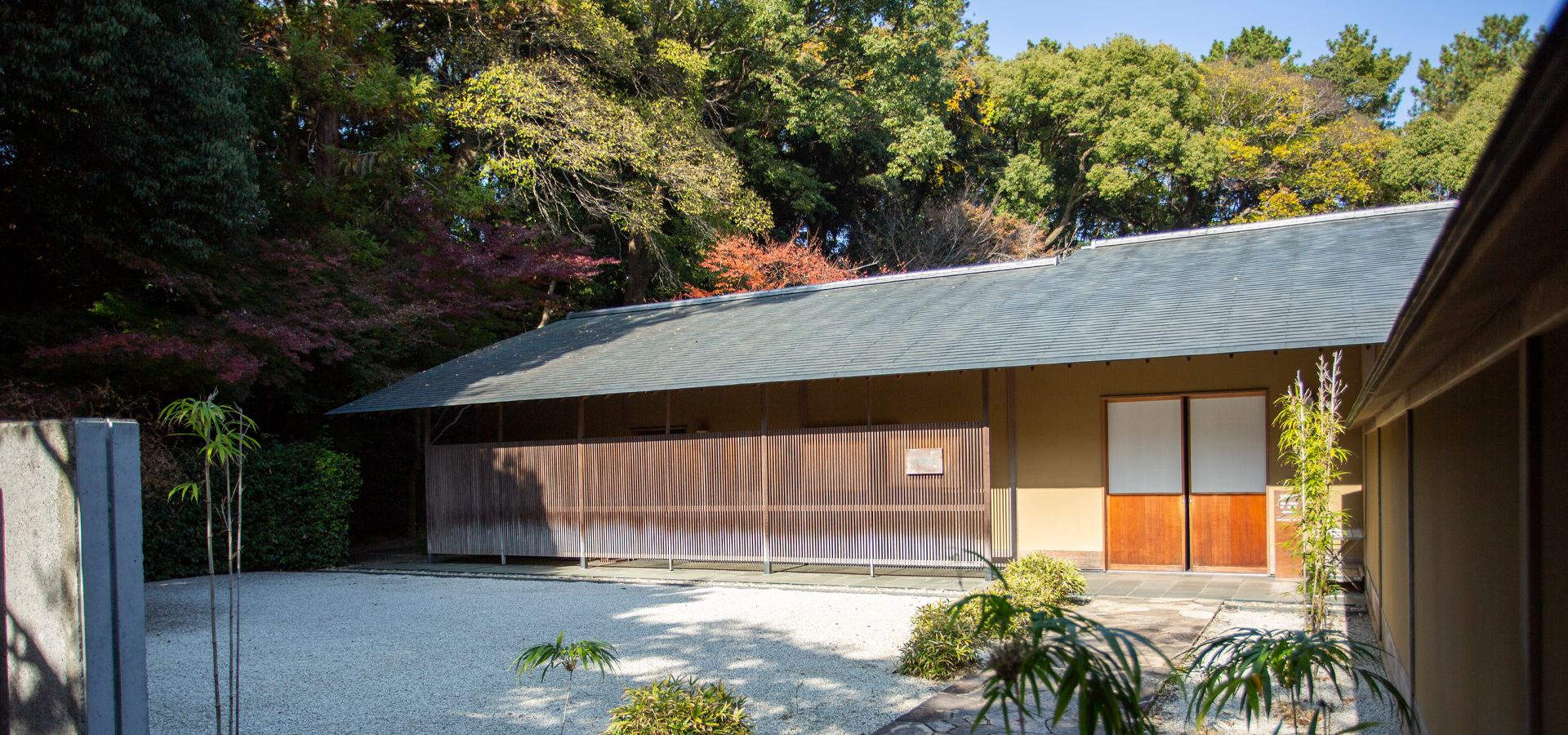
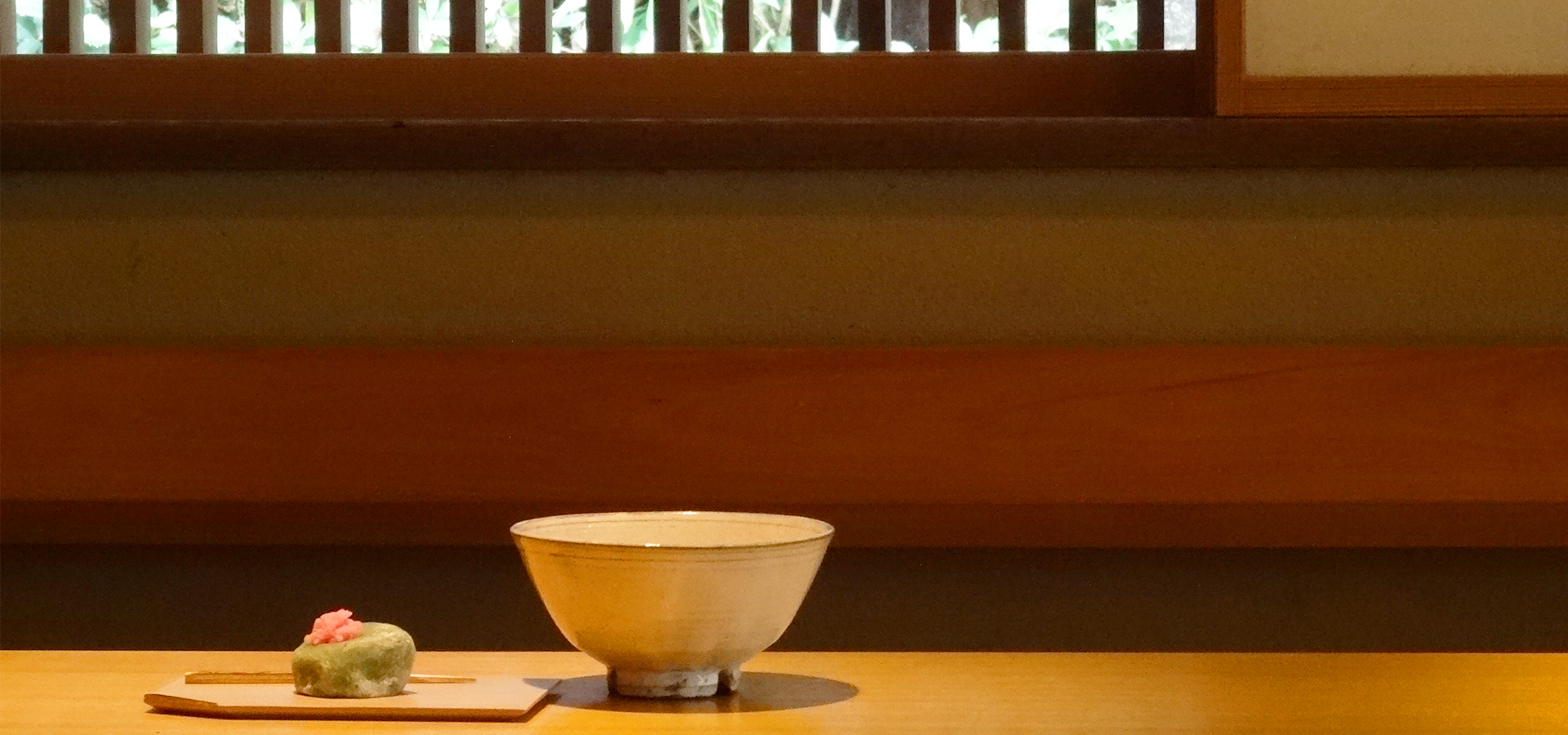

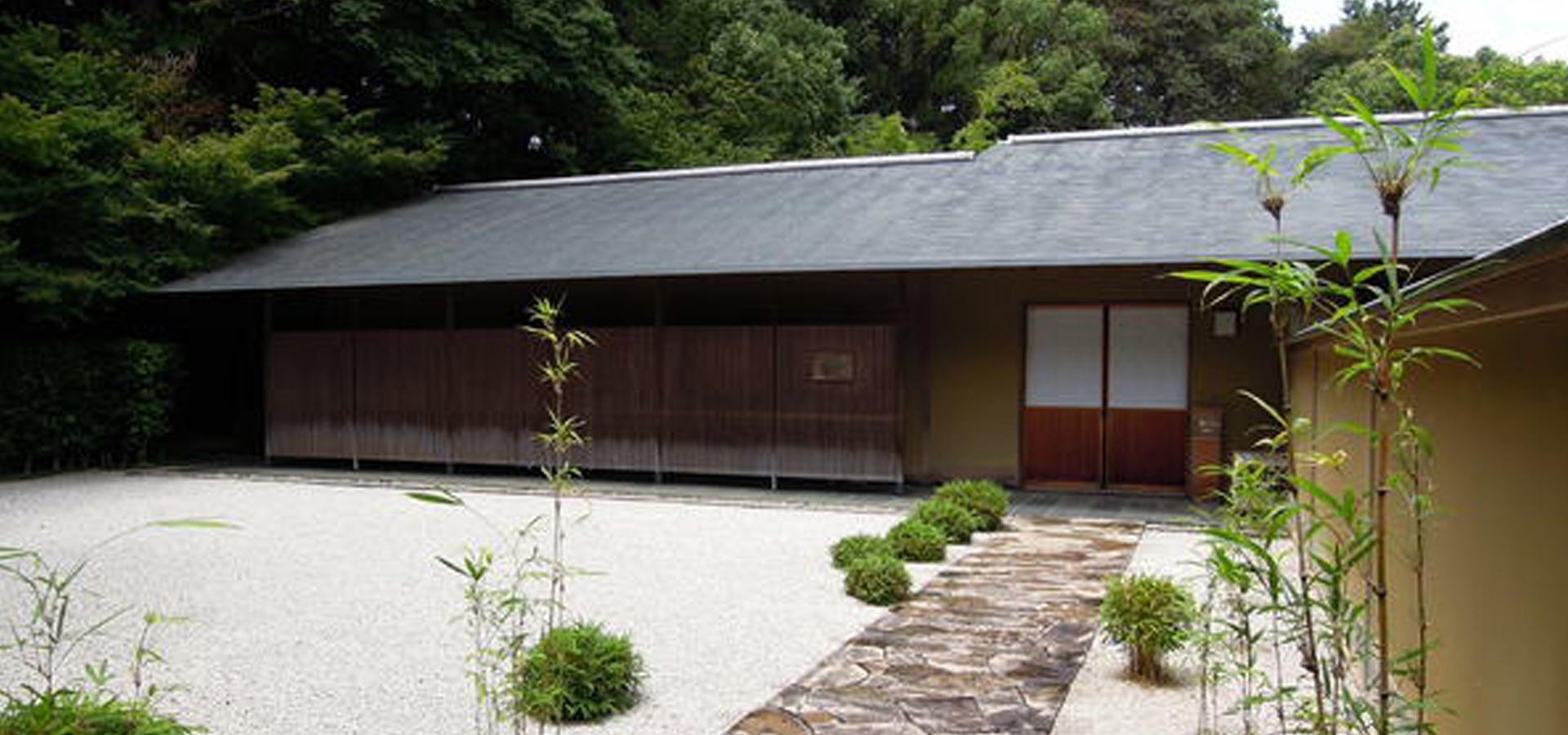




Introduction to Shointei Tea House
Nestled within the grounds of Hamamatsu Castle Park is the Shointei Tea House. The tea house is both a recreational and educational facility, open to anyone visiting the park to enjoy green tea and a Japanese sweet (wagashi). Shointei is also used for formal tea ceremonies by practitioners from across the country, and private lessons are available for those who are interested in learning more about the art of the tea ceremony.
The elegant wooden buildings of Shointei were designed by internationally acclaimed architect Taniguchi Yoshio (b. 1937), and were constructed in 1997. Taniguchi’s minimalist design allows the tea house to blend seamlessly into its wooded surroundings.
The large sliding doors of the main tea house open out onto a refined rock garden just at the location from which the garden is best viewed. Seasonal changes are a major theme in both Japanese architectural design as well as tea ceremony culture, and this can clearly be seen in the woods that enclose Shointei, which are a lush green in spring and summer but turn a deep red-gold in autumn. In the same way, the tea and wagashi offered at Shointei also change with the seasons.
Tea House Highlights
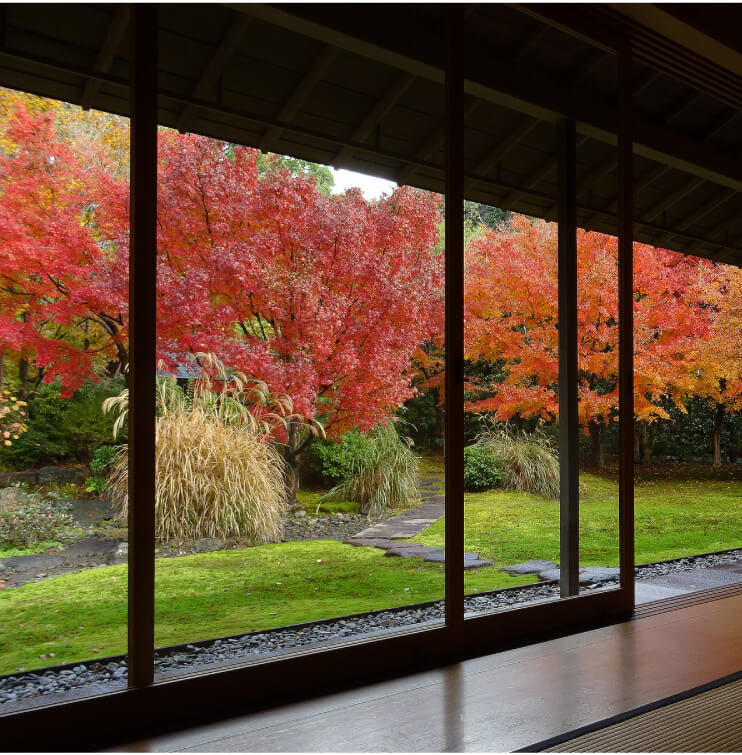
The Main Tea House
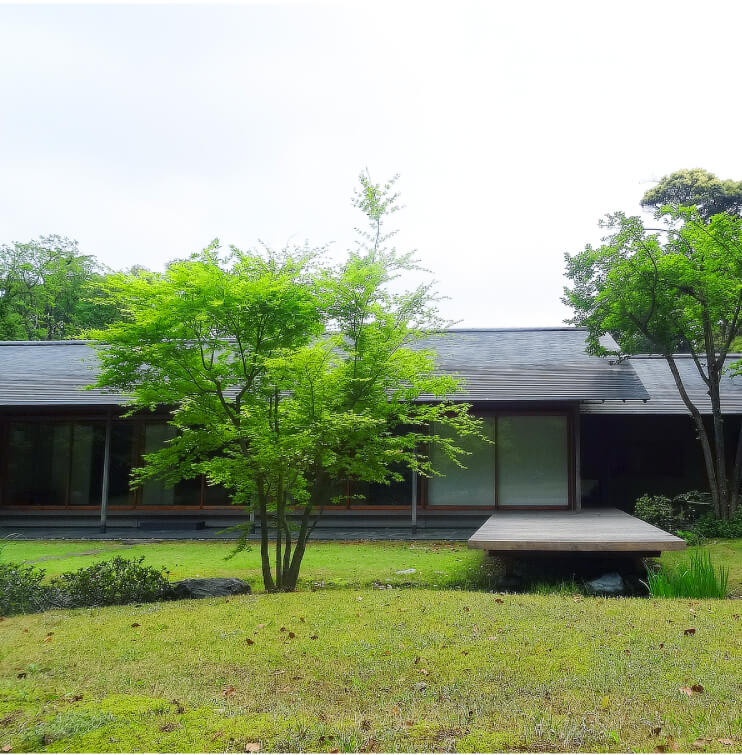
The Garden of Shointei

Facility Information
ADDRESS
11-4 Shikatani-cho, Naka-ku, Hamamatsu 432-8014
INQUIRY
TEL/FAX.(053)473-4310
OPEN HOURS
Closed: Mondays (open on public holidays),December 29-January 3
ADMISSION
Tea service 400 yen
FACILITY OUTLINE
WEBSITE
Copyright © 2019 Hamamatsu and Lake Hamana Tourism Bureau